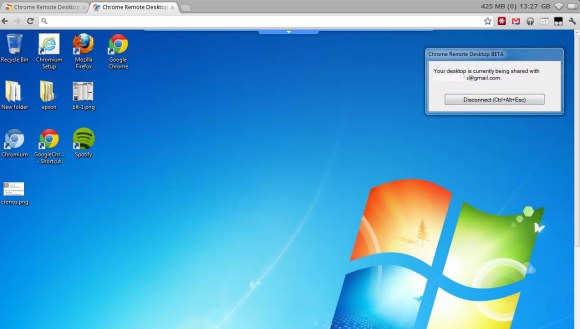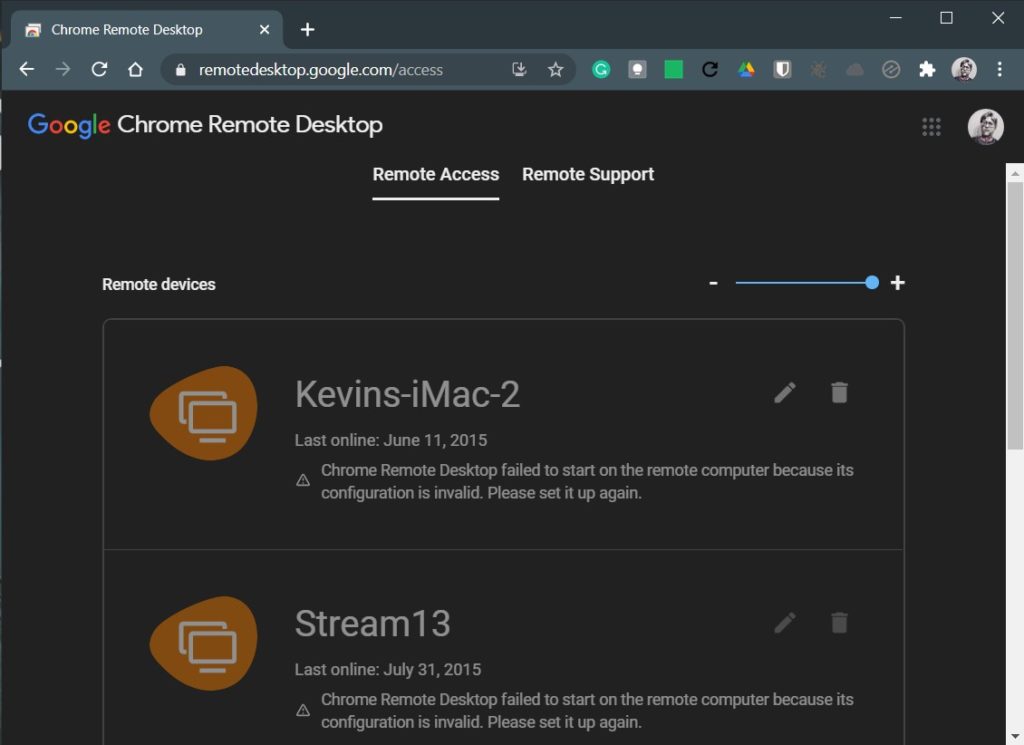

- Chrome remote desktop extension install#
- Chrome remote desktop extension archive#
- Chrome remote desktop extension software#
- Chrome remote desktop extension code#
- Chrome remote desktop extension Pc#
Note that I tested this between a Windows PC and a Chromebook that I was signed in with on Chrome and Chrome OS. A PC on Wi Fi controlling a Chromebook on an LTE connection
Chrome remote desktop extension code#
Of course, the access code will be different for each session. And if a new session is required, the same steps apply. Chromebook viewĮither user can terminate remote control access at any time. That will generate a request to the Chromebook once the access request is accepted on the Chromebook, you’ll have remote control access to it. Once the code is entered on the computer, click the Connect button. The Chromebook user should provide that code to the PC user, who then enters the code on the computer: PC view The code generated on the Chromebook is the key to the kingdom here. And the Chromebook user wants to click the “Share this screen” option, which generates a one-time access code on their Chromebook, as shown in the below image. That’s what you want on your non-Chromebook. See the “Connect to another computer” section? Note that the remote Chromebook should also take this step. Instead, choose Remote Support to see this screen. You’re greeted with two menu options and you’d think you want Remote Access. The person with a Chromebook wants to replicate your steps here and view the same URL. Just head to using the Chrome browser from a computer and you’ll see a web version of the extension. Technically, I believe the extension is a Progressive Web App using this URL.
Chrome remote desktop extension install#
But so too is a special URL if you don’t have or want to install the extension. But a common question I get, mainly for troubleshooting reasons is: How can I remotely control a Chromebook from another computer?Ĭhrome Remote Desktop is still part of the equation here.

You just install the Chrome Remote Desktop extension, follow the directions and you’re off. If (-not (Get-Command choco.Chromebooks have long supported remote desktop access to other computers.
Chrome remote desktop extension archive#
zip to the filename to handle archive cmdlet limitations # Ensure Chocolatey is installed from your internal repository # $Chocolate圜entralManagementServiceSalt = "servicesalt" # $Chocolate圜entralManagementClientSalt = "clientsalt" # If using CCM to manage Chocolatey, add the following: $ChocolateyDownloadUrl = "$($NugetRepositoryUrl.TrimEnd('/'))/package/chocolatey.1.3.0.nupkg" # This url should result in an immediate download when you navigate to it # $RequestArguments.Credential = $NugetRepositor圜redential # ("password" | ConvertTo-SecureString -AsPlainText -Force) # If required, add the repository access credential here $NugetRepositoryUrl = "INTERNAL REPO URL" # Should be similar to what you see when you browse Your internal repository url (the main one). # We use this variable for future REST calls.

::SecurityProtocol = ::SecurityProtocol -bor 3072 # installed (.NET 4.5 is an in-place upgrade). NET 4.0, even though they are addressable if. # Use integers because the enumeration value for TLS 1.2 won't exist # Set TLS 1.2 (3072) as that is the minimum required by various up-to-date repositories. # We initialize a few things that are needed by this script - there are no other requirements. # You need to have downloaded the Chocolatey package as well. Download Chocolatey Package and Put on Internal Repository # # repositories and types from one server installation. # are repository servers and will give you the ability to manage multiple
Chrome remote desktop extension software#
# Chocolatey Software recommends Nexus, Artifactory Pro, or ProGet as they # generally really quick to set up and there are quite a few options.

# You'll need an internal/private cloud repository you can use. Internal/Private Cloud Repository Set Up # # Here are the requirements necessary to ensure this is successful. Your use of the packages on this site means you understand they are not supported or guaranteed in any way. With any edition of Chocolatey (including the free open source edition), you can host your own packages and cache or internalize existing community packages. Packages offered here are subject to distribution rights, which means they may need to reach out further to the internet to the official locations to download files at runtime.įortunately, distribution rights do not apply for internal use. If you are an organization using Chocolatey, we want your experience to be fully reliable.ĭue to the nature of this publicly offered repository, reliability cannot be guaranteed.


 0 kommentar(er)
0 kommentar(er)
